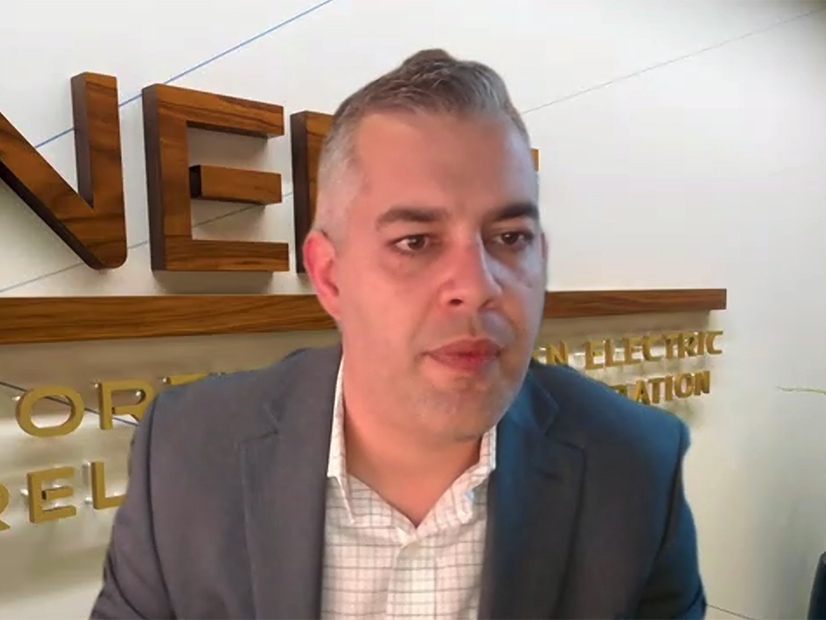NERC has filed the final draft of the Interregional Transfer Capability Study (ITCS) with FERC, wrapping up the ERO’s portion of the task set out by Congress in the Fiscal Responsibility Act of 2023 ahead of the December deadline.
The ERO submitted the ITCS on Nov. 19, NERC Director of Reliability Assessments and Performance Analysis John Moura said in a webinar the same day. Next, FERC will post the report for a public comment period; Moura said the starting date and duration of the comment period have not been set.
Following the comment period the commission will submit recommendations for statutory changes, if any, to Congress.
Submitting the ITCS is a “milestone in our ongoing efforts to enhance reliability across” the continent’s electric grid, Moura said. The FRA, passed in June 2023, ordered NERC to work “in consultation with” the regional entities and transmitting utilities to submit the study to FERC by December 2024, leaving the ERO less than 18 months to complete an unprecedented task.
Using a favorite comparison, Moura reminded listeners that “Congress has only asked NERC and the ERO to do two things in our entire history: form ourselves back in 2005 under the … Energy Policy Act, but also to do this study.” As a result, he said, NERC saw ITCS as “on par” in terms of importance with its own charter.
The study comprises three parts, aligning with each major objective set by Congress. Part 1, released in August in draft form, contained an analysis of transfer capabilities between transmission planning regions in North America. The second and third parts were released earlier in November; they provide, respectively, recommendations for prudent additions to transfer capability that could strengthen grid reliability and recommendations to meet and maintain total transfer capability. (See NERC Releases Final ITCS Draft Installments.)
While these components focus on the U.S. grid, Moura said NERC concluded early on that “you really cannot have a credible study without including Canada.” Now that the congressional mandate has been achieved, the ERO will complete an additional installment covering transfer capabilities and prudent additions from the U.S. to Canada and between Canadian provinces. NERC plans to release the fourth installment in the first quarter of 2025.
Meeting the FRA’s requirements posed considerable challenges for NERC, Moura said. To start with, while the ERO previously conducted regional studies of transfer capability, it never had attempted to do so across the entire grid and never incorporated the efforts of transmission utilities to this extent. The congressional mandate provided NERC with an opportunity to stretch itself and build capabilities for collaboration that will be useful in future studies, Moura said.
Another difficulty was defining the scope of the study. The FRA described its goals in broad terms but, as Moura explained, narrowing the requirements to a workable framework took some effort.
“We didn’t find ‘prudent’ in our engineering textbooks, so we really had to understand, what is Congress asking us?” Moura said. “The way NERC thinks about ‘prudent’ is really laser-focused around reliability. And so prudent for reliability is what this study is all about. We don’t look at economics, we don’t look at cost-benefit between different projects or different approaches. We’re strictly looking at this challenge from a reliability perspective and remediating the reliability impacts that we see out into the future.”



